LOVE GAME
A HISTORY OF TENNIS, FROM VICTORIAN PASTIME TO GLOBAL PHENOMENON
Elizabeth Wilson
The University of Chicago Press
CHICAGO
Elizabeth Wilson is a novelist and cultural historian whose many books include Cultural Passions, Adorned in Dreams, and The Sphinx in the City.
The University of Chicago Press, Chicago 60637
Copyright 2014 Elizabeth Wilson
All rights reserved. Published 2016.
Printed in the United States of America
First published in the UK in 2014 by Serpents Tail, an imprint of Profile Books Ltd
25 24 23 22 21 20 19 18 17 16 1 2 3 4 5
ISBN-13: 978-0-226-37128-3 (cloth)
ISBN-13: 978-0-226-37131-3 (e-book)
DOI: 10.7208/chicago/9780226371313.001.0001
Library of Congress Cataloging-in-Publication Data
Wilson, Elizabeth, 1936 author.
Love game : a history of tennis, from Victorian pastime to global phenomenon / Elizabeth Wilson.
pages cm
Includes bibliographical references and index.
ISBN 978-0-226-37128-3 (cloth : alk. paper) ISBN 978-0-226-37131-3 (e-book) 1. TennisHistory. I. Title.
GV992.W558 2016
796.342dc23
2015033804
 This paper meets the requirements of ANSI/NISO Z39.48-1992 (Permanence of Paper).
This paper meets the requirements of ANSI/NISO Z39.48-1992 (Permanence of Paper).
This is for fellow fan Paulo, and for Mark and Angie,
for putting up with us
Tennis is like sex... Thrusting across the net the ball is just a medium, a messenger of love and loathing all rolled up in one... Listen to the language!... sweet spot, throat of the racquet. Dish and shank, stab and slice... and penetrate its pornographic... Approach and hold, break, break back, stroke... and connect its romantic.
Lionel Shriver: Double Fault
CONTENTS
The game of love
BY THE TIME I WAS THIRTEEN I was madly in love. It was a blinding, choking, loyal love, filled with devotion and dedication. Obvious to all, it was understood only by a few.
The object of Ricardo Pancho Gonzales affection was his tennis racquet. He even took it to bed with him. A MexicanAmerican from a humble background, he was to have a troubled, passionate relationship with the game. The scar on his cheek gave his Latin looks a dangerous edge; he was no stereotype of the languid, white-clad player. Nor was he alone in falling in love with a game.
The placid Dan Maskell, who also came from a working-class family, but was a far different character from the fiery Mexican, started as a ball boy, and thus began a love affair with lawn tennis that has never faded. And in the twenty-first century, it was not uncommon for a manly voice to shout from the stands, I love you Roger, when Federer was playing.
Love, the word, is at the centre of tennis. It is embedded in the unique and eccentric tennis scoring system. Love meaning nothing zero. Playing for love. That it was, uniquely, a sport in which women and men played together made it a love game in a social and romantic sense. Yet the feminine element in tennis was always controversial. As was that troublesome love. It was not a manly word. When a friend introduced the seventies American star, Chrissie Evert, to her future husband, the handsome British player, John Legs Lloyd, she was immediately attracted. As he left, he said, Lovely to meet you. Chrissie turned in dismay to her friend: Oh no! Hes gay! Such was the association of love with effeminacy, at least in the American mind.
The love of which Laney wrote and Gonzales spoke was akin to what the ancient Greeks termed agape: an intense admiration and more: something spiritual and almost religious. Yet the rhythm of tennis was also erotic. The cleanly struck shots that streamed off the racquet, the ball exploding off the court and the bodys leap from gravity and time these were inspirational. The player pressed with stroke after stroke and built to the final unanswerable shot and this was repeated in game after game, climax and anti-climax building ever higher, all leading to the point of no return. For player and spectator alike the game provided no guaranteed orgasmic moment, no certainty of a win. The game enacted an unpredictable dialectics of desire and the spectators desire is focused on the player.
The tennis star is subjected to intense scrutiny. Tennis matches can last for hours and during them the spectators gaze is relentlessly trained on the players body, movements and moods, as happens in no other sport, certainly not to the same extent. (The attention paid to footballer David Beckham is the exception rather than the rule.) This is even more the case in the age of the close-up, the replay and the slow-mo. These place the tennis player alongside the film star as an icon of glamour and beauty.
The erotic body of the player is deployed in a sport discussed in terms of artistry; the performer whose body is her instrument is considered a creative genius. Sports writer Frank Deford questioned whether a sportsperson could be an artist in the full sense of the word. A sporting performance, he thought, might be beautiful, but a great athlete was more like some natural wonder a flower, a waterfall or a snow-capped mountain.
This is clearly wrong. To suggest that an athlete is some kind of natural phenomenon is to ignore the hard work and intense dedication that goes into the development of any outstanding performer. There is nothing natural about becoming the best tennis player (or the best dancer) in the world. To an inborn gift of eye-hand coordination the player must bring the capacity to devote herself to endless repetitive practice of the same movement. To that must be added the feel outstanding players have for their game. This, it has been suggested, is an affinity for translating thought into action. Players see the visual field in a manner differently from those less gifted and this enables them to discern subtle patterns unrecognised by others. Chess masters, artists and athletes have this special awareness. They can break down their field of operation into clusters of patterns and, often without conscious thought, translate them into movement. This is a form of creative expression in which the athletes body is the instrument. Her split-second movements are those of an artist and may indeed display originality amounting to genius.
There is the further uncertainty whether the performance arts require creative genius in the way that, say, composing music is said to do: whether the cellist Rostropovich the performer who brings music to life is a genius on the same level as Beethoven or Shostakovich, who created that music. It is problematic to rate a bodily performance by comparison with a work created out of random words or sounds.
The performance of a dancer is as ephemeral as that of an athlete. The difference is that dance is, by long tradition, acknowledged as art, supported by music, narrative and mise en scne. The athlete lacks such supports, but, like the dancer, creates through movement. You could even argue that tennis is more creative than dance, since the dancer usually follows choreography designed in advance, whereas the tennis player must always improvise.
Tennis appears to be closer to dance than to any other performance form (with the possible exception of figure skating). The great 1920s champion Bill Tilden excelled at dancing and skating and on court his movement was astonishingly graceful. His fleet-footedness was legendary: the Spanish player Manuel Alonso thought it was like seeing Nijinsky dance across the stage. He perfected the art of taking a little half-step just before he turned, enabling him to make a perfect stroke with perfect spin.
Next page

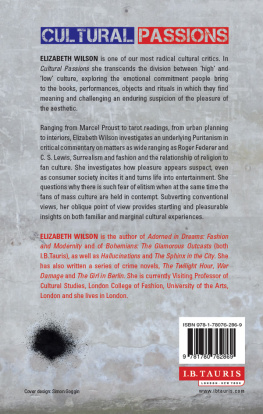
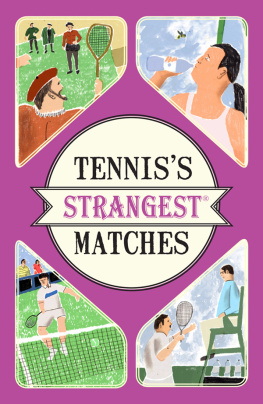
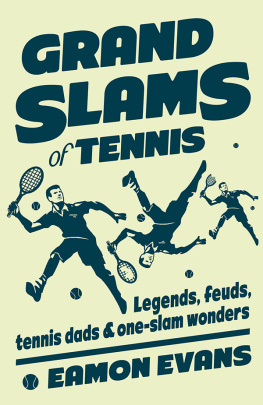
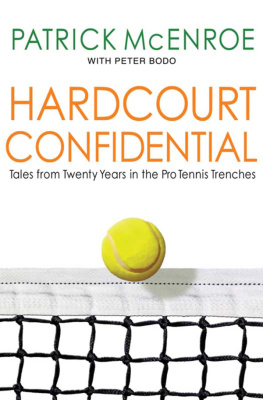
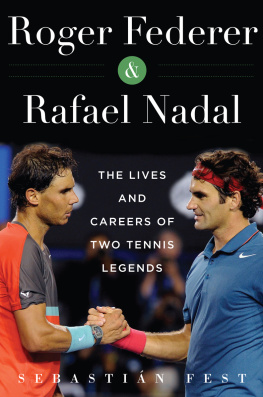
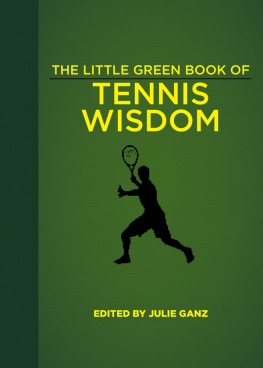
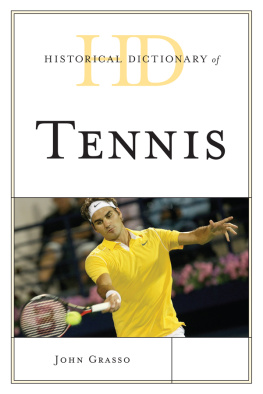
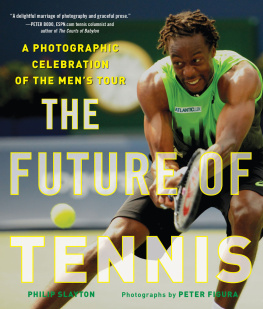
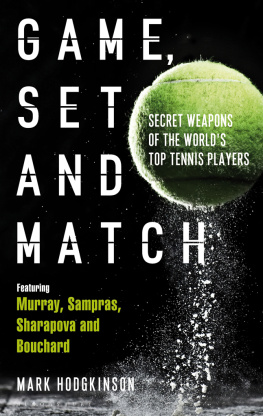
 This paper meets the requirements of ANSI/NISO Z39.48-1992 (Permanence of Paper).
This paper meets the requirements of ANSI/NISO Z39.48-1992 (Permanence of Paper).